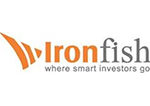Contributor: Holding Redlich
TYPES OF EMPLOYMENT IN AUSTRALIA
–ADVANTAGES, DISADVANTAGES & RISKS
1. PERMANENT (also known as ongoing )
1.1 ADVANTAGES
(a) Can be used for full-time engagements (38 hours per week with reasonable additional hours) or part-time engagements (fixed hours of less than 38 hours per week).
(b) Administratively easy – enter into once only, review before end of Minimum Employment Period for ongoing suitability. Variations in writing can be used if changes required, eg to increase salary.
(c) Subject to Minimum Employment Period of 6 months, or 12 months if business employs less than 15 employees. If employee not suitable for any reason (just not a proscribed reason, e.g. discrimination) contract can be terminated on 1 weeks’ notice during the Minimum Employment Period.
(d) Businesses with less than 15 employees have the benefit of the Small Business Fair Dismissal Code, which provides that:
- employees cannot make a claim for unfair dismissal within the first 12 months of their employment; or
- if dismissed after being employed for more than 12 months and the employer has followed the Small Business Dismissal Code, then the dismissal will be deemed to be fair and an employee will not be successful in an unfair dismissal claim.
(e) Excluded from the Unfair Dismissal Regime only if the employee is still within the Minimum Employment Period of 6 (employers with over 15 employees) or 12 months (employers with 15 employees or under).
(f) Promotes job security, attraction and retention, fostering employee commitment.
1.2 DISADVANTAGES / RISKS
(a) Termination subject to notice of termination in accordance with the National Employment Standards in the Fair Work Act 2009 (Cth) and termination process must factor in valid reason and procedurally fair process if employee covered by Unfair Dismissal Regime.
(b) Subject to Unfair Dismissal Regime – therefore termination must be for valid reason and done in a procedurally fair way.
1.3 RECOMMENDED USE
Use permanent engagement for positions that will be ongoing and needed in the business medium to long term, including for the delivery of core services of the business.
2. FIXED-TERM
2.1 ADVANTAGES
(a) Can be used for specified term (i.e. employment for exactly 6 or 12 months), a specified project or a specified task. Comes to an end by effluxion of time – i.e. the contract and employment end on the nominated expiry date. No costs incurred when contract expires by the effluxion of time.
(b) Can terminate contract early only if employee engages in serious misconduct or serious breaches of contract (if clause contained within contract) without paying out remainder of term.
(c) Excluded from Unfair Dismissal Regime
Note: a fixed-term employee could still lodge an Unfair Dismissal Claim and the employer will need to file a jurisdictional objection to strike the claim out – which involves times and money.
2.2 DISADVANTAGES / RISKS
(a) May limit candidates and may impact on retention.
(b) Administratively burdensome if need the employee on a medium to longer term and ongoing risk of the financial penalty (of paying out remainder of contract) if business requires flexibility to terminate early for any reason.
(c) If terminate early for reasons other than serious misconduct or serious breaches, significant financial burden in paying out in full the remaining period of the contract.
(d) If used long term by rolling over contracts upon expiry each time, fixed-term employees risk of a dispute where an employee will argue that they are a permanent, as the employee may form a reasonable expectation of ongoing employment. If found to be employed on an on-going, permanent basis, then employment and dismissal would be subject to Unfair Dismissal Regime.
2.3 RECOMMENDED USE
Use fixed-term for positions that will be required short term only, or are subject to a specific project or task that will not be ongoing, or requiring specialist skill-set not available in the business for a short term. Use with extreme caution and only for short term engagements up to 3 to 6 months that will not require termination earlier than the nominated date.
3.MAXIMUM-TERM
3.1 ADVANTAGES
(a) Can use an estimated term (i.e. employment which may continue for up to 6 months). Comes to an end by effluxion of time on the nominated expiry date, but also can be terminated earlier (subject to notice and unfair dismissal requirements). No costs incurred when contract expires by the effluxion of time.
(b) Can terminate contract early with, or without notice for any reason (so long as not a proscribed reason, e.g. discrimination and subject to compliance with unfair dismissal requirements) without paying out remainder of term.
(c) Businesses with less than 15 employees have the benefit of the Small Business Fair Dismissal Code, which provides that:
- employees cannot make a claim for unfair dismissal within the first 12 months of their employment; or
- if dismissed after being employed for more than 12 months and the employer has followed the Small Business Dismissal Code, then the dismissal will be deemed to be fair and an employee will not be successful in an unfair dismissal claim.
3.2 DISADVANTAGES / RISKS
(a) May limit candidates and may impact on retention.
(b) Administratively burdensome if need the employee on a medium to longer term.
(c) If terminated earlier than the ‘maximum term’, termination subject to notice of termination in accordance with the National Employment Standards in the Fair Work Act 2009 (Cth) and termination process must factor in valid reason and procedurally fair process if employee covered by Unfair Dismissal Regime.
(d) Subject to Unfair Dismissal Regime – therefore termination must be for valid reason and done in a procedurally fair way.
3.3 RECOMMENDED USE
Use maximum-term for positions that will be required short term only, again for a specific task or function that will not be ongoing. Recommend Maximum Term contracts instead of Fixed-Term contracts given the flexibility to terminate early on notice without paying out the remainder of the contract term. Do not recommend for medium to long term use in a business or for engagements required over a 1.5-2 year period.
4.CASUAL
4.1 ADVANTAGES
(a) Flexible engagement from shift to shift – has no guaranteed hours of work and works irregular hours.
(b) Can terminate without notice at any time and for any reason (so long as not a proscribed reason, e.g. discrimination, and as long as employee is not a long-term casual).
(c) Excluded from Unfair Dismissal Regime as employment ends at the cessation of each shift (unless employee is a long-term casual).
4.2 DISADVANTAGES / RISKS
(a) Higher hourly rates – usually paid a 25% loading in addition to hourly rates and casual does not accrue leave entitlement such as paid annual leave and personal/carer’s leave.
(b) If used long term, casual employee can be regarded as a ‘long-term casual’ and entitled to long service leave and other entitlements.
4.3 RECOMMENDED USE
Use casual engagements for positions that will be ad-hoc and unpredictable, or of a very short term in nature only (e.g. relief, sporadic).
*This article has been provided by way of general information only and does not form substantive legal advice. This table should therefore not be relied on without reverting to Holding Redlich for advice.
Disclaimer: This Article is provided by local Australia law firm HoldingRedlich. Australia China Business Magazine does not provide any consultation or service.You need ask your expert or lawyer when you make any decision or take action. Australia China Business Magazine will not take any responsibility for you.















